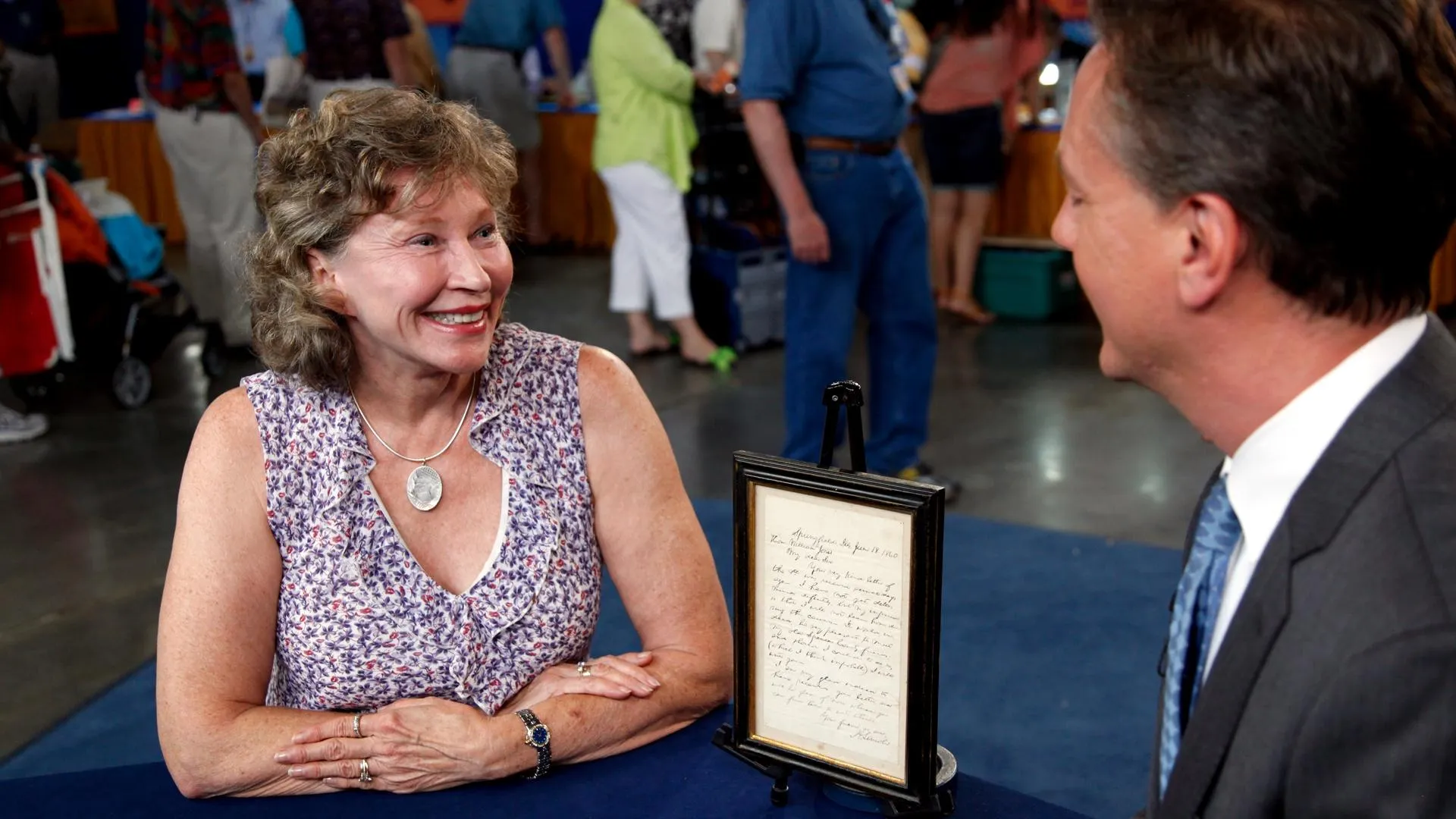GUEST: Well, it's a family collection. And it started with my grandmother with this one. And on the bottom is the date, 1905. These with the gold coins are called geldenscheissens, and they're from Germany. And when people bought new homes way back then, they were given one of these as a... good luck. My mom found this one, and then I found this one. So I'm hoping my daughter eventually will find one. The others my mom and grandmother had been collecting through the time. When my mom passed away, I started finding them, but they're hard to find. You just don't see them. So I love them. They all have a little story, and I keep them close to my heart.
APPRAISER: When you say you still find them, where do you look for them?
GUEST: I have looked online. Because I'm a collector, it kind of ruins the hunt for me. I love to go to an antique store or flea market and find one. In fact, I was in Peoria, Illinois, at my son and daughter-in-law's place, and we went to a flea market there and I found this one and that one.
APPRAISER: And can I ask you what you paid for that one?
GUEST: That one I paid $60.
APPRAISER: Have you ever paid any more than that for one?
GUEST: No.
APPRAISER: Well, these were made in Germany, but we don't really know who made them. Most of them were made in the Dresden area of Germany, but they made them in small porcelain works throughout. And very few of these, if any, would be marked. We call them different things. They're usually called trinkets. Sometimes they're called fairings. 1905 is probably the date that that was made, or within a few years of it. And I would suspect that the majority of these date from right around there. So they're all 100 years old or so, or a little more. And back then, you could buy them as very inexpensive objects at state fairs. You could buy them at little five-and-dime stores, little general stores at the time, here and also in Germany and in Europe in general. You could buy these in most European countries. The Germans made them and exported them very inexpensively. This one is inscribed in German, which suggests that it was sold within a German-speaking country, probably Germany. And it talks about a morning ritual, I think, here. Obviously, the reference that ties them all together, the common denominator is the potty; the chamber pot. The chamber pot was, at that time, an essential everyday part of life. And it's not a pleasant thing to use. So what do you do? You make fun of it. They're all the same, but they're all different.
GUEST: Yes, yes.
APPRAISER: I like the nodder. I've never seen a nodder like that before. This one, rather nicely, I think, featuring a black and a white child kind of fighting over the same chamber pot.
GUEST: Right.
APPRAISER: And I think there's a great message in that. This stage in life, we're all the same. I would say this one is the best in terms of its value and its complexity. And it's probably a little older than most. I would date this one to about 1885.
GUEST: Oh, really? Okay.
APPRAISER: And I would say $60 is a good price. I don't see any problem with that up to $100. And individually, I see them between $25 and $75. And by the way, if they were ever sold at auction, I think they would be sold as a collection, correctly.
GUEST: Okay.
APPRAISER: And if you add them all up, I think you're looking at at least $700 to $900 here for your little collection.
GUEST: Very nice.
APPRAISER: By the way, I wish I could do that, but...
GUEST : So don't all we.



